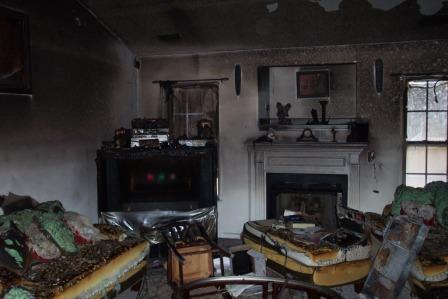The dangers don’t end when the flames are put out. Fire damage can linger for years, and if you try to DIY with a cleanup, you probably won’t get all of the soot and flourishing mold from the water that tamed the fire. “Soot” is the residue left over from the smoke, and what exactly makes up the smoke can depend on a lot of things—like what burned, from an electrical fire due to faulty tech equipment to a chimney fire, and whether or not it was toxic. Both soot and mold are dangerous leftovers from a house fire and why homeowners deserve professional fire damage cleanup.
Not all soot is necessarily dangerous, but do you want to take that risk? Likewise, not all water damage will lead to mold, black mold or mildew production. But again, are you ready to take that gamble? Not only do homeowners not have the appropriate tools, knowledge and experience to (safely!) clean up after a fire, they might unintentionally expose themselves to dangerous particles in the process.
Here are just a few of the things that can go wrong if you try to save a little cash by cleaning up yourself:
1. Soot gets into your bloodstream
The particulate matter in soot is so tiny that it can get into your bloodstream and lungs without your noticing. According to the American Lung Association, breathing soot pollution can cause “cancer and developmental and reproductive harm.” The Environmental Protection Agency has described soot as “Microscopic particles (which) can penetrate deep into the lungs and have been linked to a wide range of serious health effects including premature death, heart attacks and strokes, as well as acute bronchitis and aggravated asthma among children.”
2. Black mold can kill
From in-home sprinkler systems to firefighter’s hoses, there was likely a lot of water involved to save your humble abode. Water damage can destroy your home’s structure, and it can also lead to mildew, mold and the deadly black mold. Mold has a penchant for thriving in dark areas, so it’s possibly only a professional will spot it. Even when mold isn’t deadly, it can cause respiratory issues and exacerbate allergies.
3. It may have stirred up asbestos
Asbestos fibers are the sole cause of mesothelioma, a cancer of the organ linings which is almost always deadly. However, asbestos ingested in small quantities not very often is usually fine, which is why it’s still legal according to the San Antonio Express-News recent coverage. It was widely used in home construction from the 1950s through the 1980s and is still legally used today. However, a fire might “stir up” those fibers, so cleaning up yourself without the proper safety gear is a huge risk.
Simply put, you don’t know what exactly burned, what particles may have been put into the year, or what toxic materials you might be breathing in. This is no time to pinch pennies or cut corners. Rely on a professional crew to clean up after a fire so you can rest easy knowing not a nook or cranny was missed. Otherwise, the residual effects of the fire might be more heartbreaking and lethal than you ever imagined.
